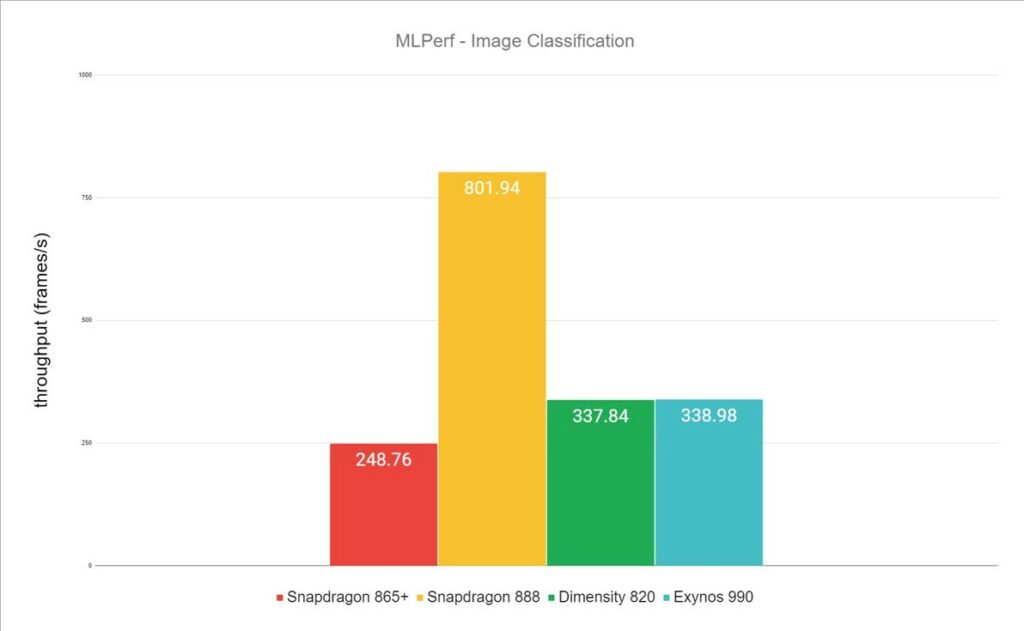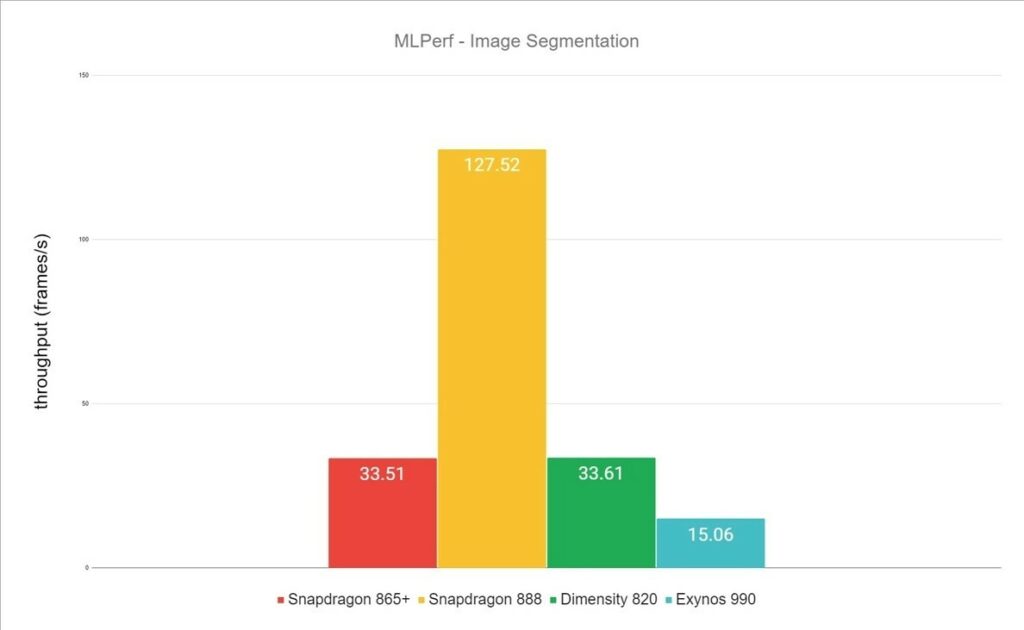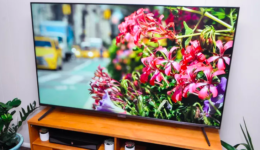The Snapdragon 888 is the upcoming Qualcomm’s chipset for Android smartphones in 2021. However, since we can’t run our own benchmark tests yet, Qualcomm has done that itself this time. The company ran several reference designs through popular tests like AnTuTu, Geekbench, GFXBench, and MLPerf. So, here are the Qualcomm Snapdragon 888 benchmarks you are waiting for.
Qualcomm Snapdragon 888 Benchmark Results
Here are the Qualcomm test devices’ specifications:
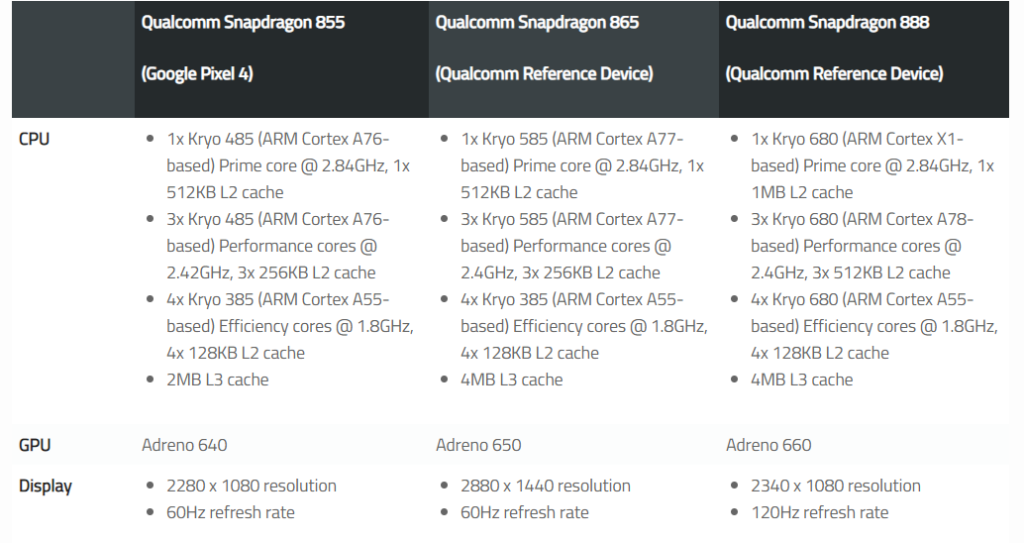
AnTuTu Results
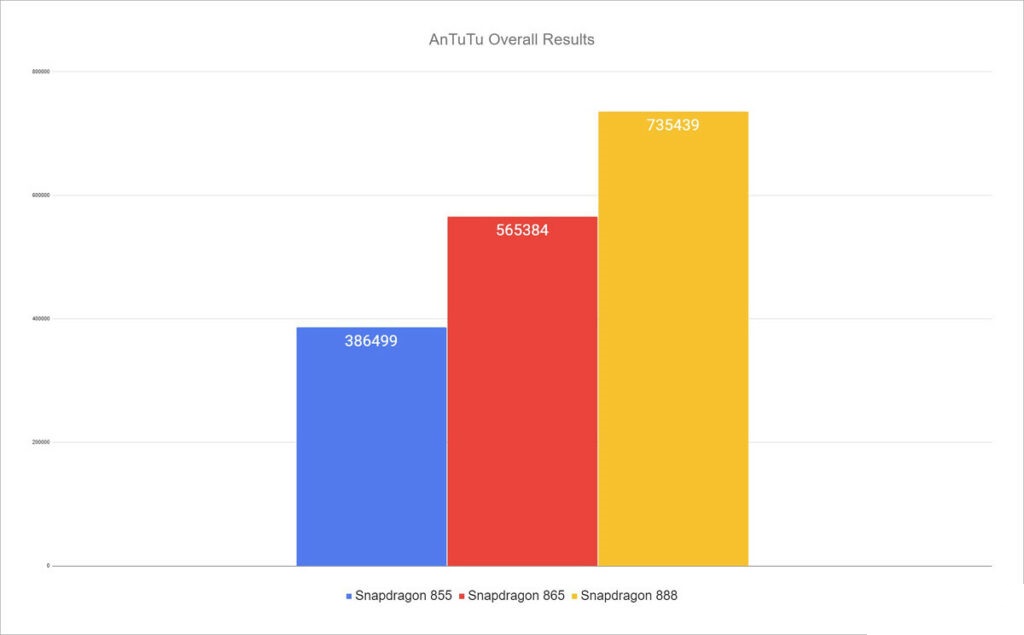
Let’s start with AnTuTu, a holistic benchmark, here! we can see that the Qualcomm Snapdragon 888 devices scored nearly 17,000 points higher than the 865 and almost 350,000 points higher than the 855.
Although we can’t show you here, the Snapdragon 888’s biggest performance improvement comes from GPU and memory. It scored approximately 45.56% higher in AnTuTu’s GPU subtest compared to the Snapdragon 865. Similarly, the Snapdragon 888 scored about 52.08% higher in AnTuTu’s memory subtest compared to the Snapdragon 865.
When compared to the Snapdragon 855, the new chipset outscored it in both GPU and memory subtests by 98% and 117%. Meanwhile, the Snapdragon 888 scored approximately 30% and 90.28% better in AnTuTu’s CPU subtest compared to the last two versions.
Geekbench Results
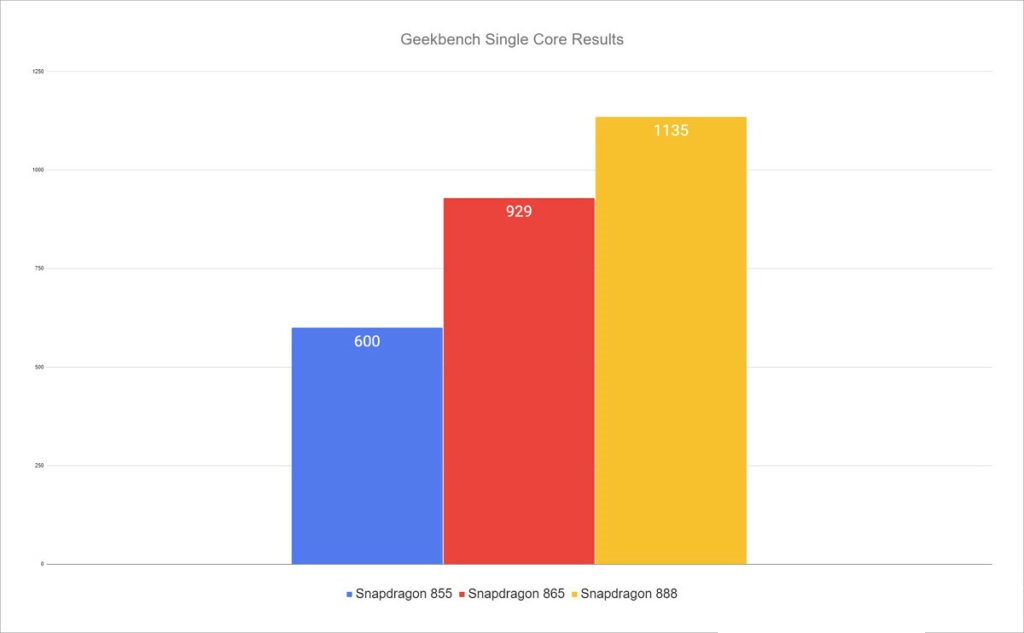
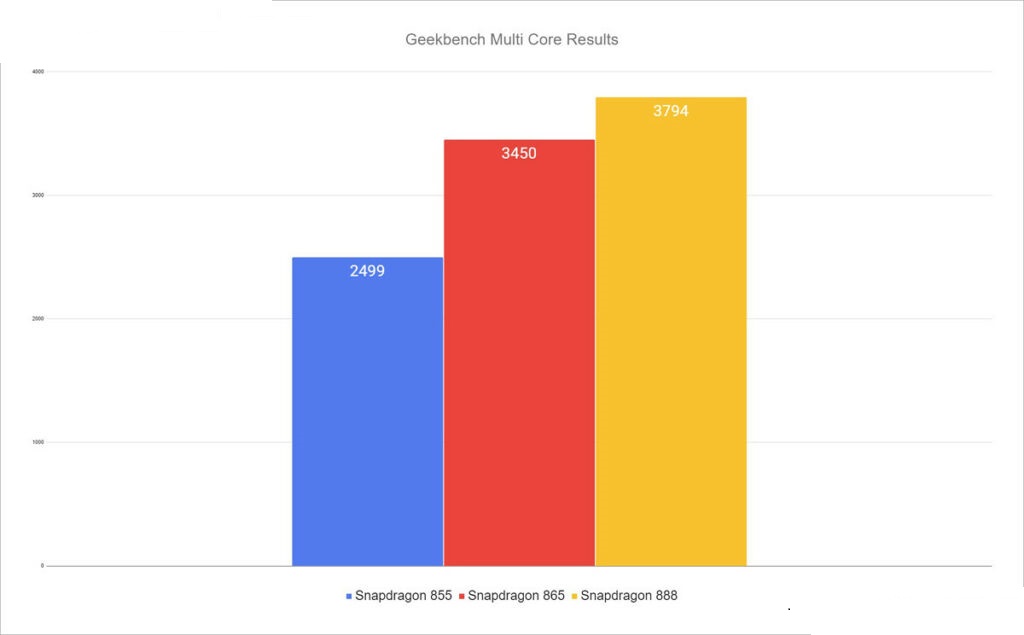
In Geekbench 5, the Qualcomm Snapdragon 888 performs 22% and 10% better in both single-core and multi-core tests compared to the 865 version. Meanwhile, its scores are remarkably higher than the 855 with 89.17% and 51.82% increase in these tests.
Besides, Qualcomm promised a 25% boost in CPU performance of the Snapdragon 888 over its previous version. Also, its ARM Cortex-X1 Prime core is clocked at a conservative 2.84GHz (same speed as the last-gen). So, we might see a 3+GHz clock speed for the mid-year Snapdragon 888 refresh. If that’s the case, we can expect the Snapdragon CPU performance to improve even further.
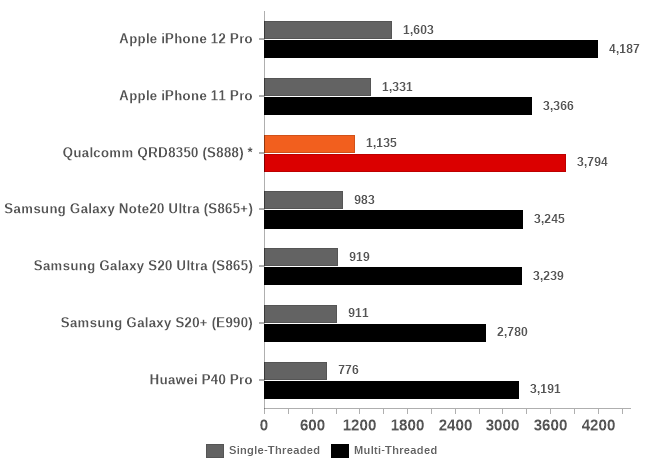
Overall, if you’re upgrading from a two-year-old flagship, then the 888 should bring major improvements in CPU performance. On the other hand, this improvement is a bit smaller if upgrading from a one-year-old flagship. Personally, I’m more excited to see how Snapdragon 888 devices handle console emulation.
GFXBench Results (Gaming Tests)
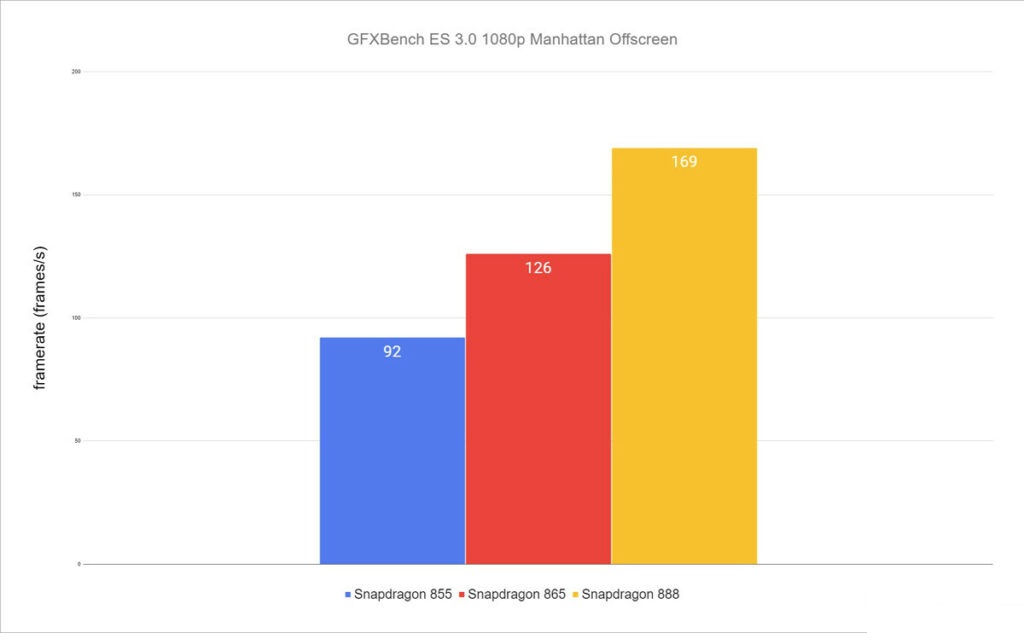
In GFXBench’s Manhattan test, the Snapdragon 888 had an average frame rate of 169fps. And, it has 34% and 83% higher than the frame rates achieved by the Snapdragon 865 and 855.
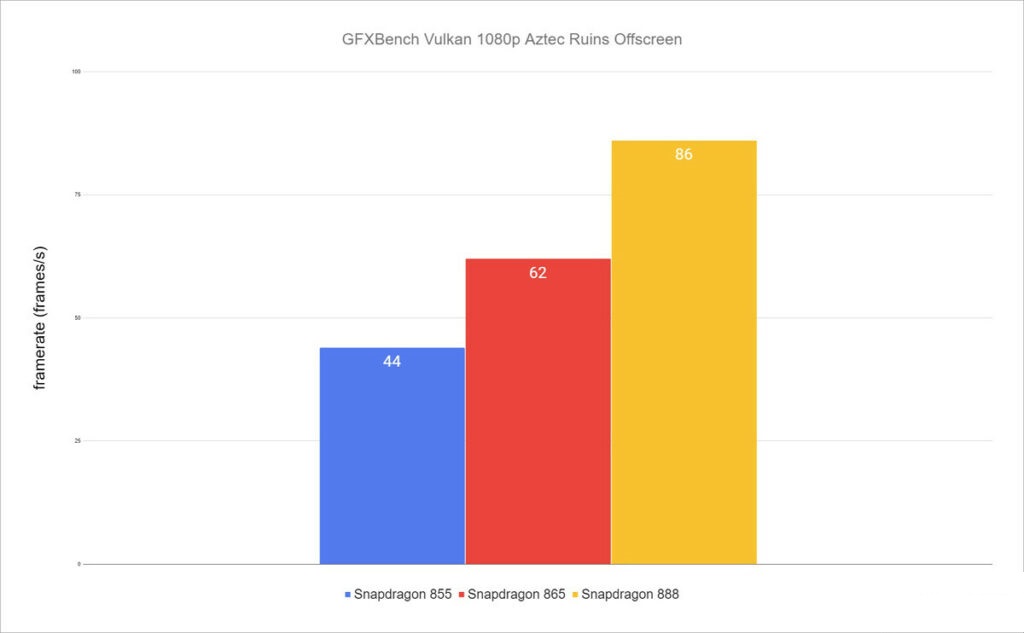
Moving on to the Aztec Ruins test, which uses Vulkan graphics API, the Snapdragon 888 had an average frame rate of 86fps. And, it didn’t disappoint us with about 38% and 95% better framerates when compared to the 865 and 855 versions.
Gaming is definitely the biggest reason why people care about these benchmark results. Now, we can believe that the Snapdragon 888 can deliver amazing gaming performance with 35% faster graphics rendering and 20% better power efficiency. Also, these results only demonstrate the Snapdragon peak GPU performance. Therefore, we’ll have to revisit GFXBench once we get our hands on the chip in order to run more performance tests.
MLPerf Results
In case you didn’t know, MLPerf Mobile is an open-source benchmark for testing mobile AI performance. And, despite having huge leaps in this area every year, the Snapdragon 888 AI test results this year are the most impressive. In fact, its AI engine offers a 26 TOPS performance increase when compared to the 15 TOPS performance of Snapdragon 865. Thanks to the new fused AI accelerator architecture of the Hexagon 780 DSP, sharing and moving data are more efficient on the new Snapdragon.
Additionally, the most promising thing of these benchmarks is MLPerf Mobile. Its initial batch of mobile inferencing results is public now. So, we used those results to compare with the Snapdragon 888. Also, these results only cover 3 devices:
- MediaTek Dimensity 820-powered Xiaomi Redmi 10X 5G
- Qualcomm Snapdragon 865-powered ASUS ROG Phone 3
- Exynos 990-powered Samsung Galaxy Note 20 Ultra 5G
In these benchmarks, we can see that the Qualcomm Snapdragon 888 achieved the highest scores in all four tests. It will be interesting to see what apps and features developers can create using the AI prowess of the Snapdragon 888. While computer vision will play an important role in the AI-enhanced videography features, improved NLP performance can affect video aspects like audio recording.
Qualcomm Snapdragon 888 vs Apple A14
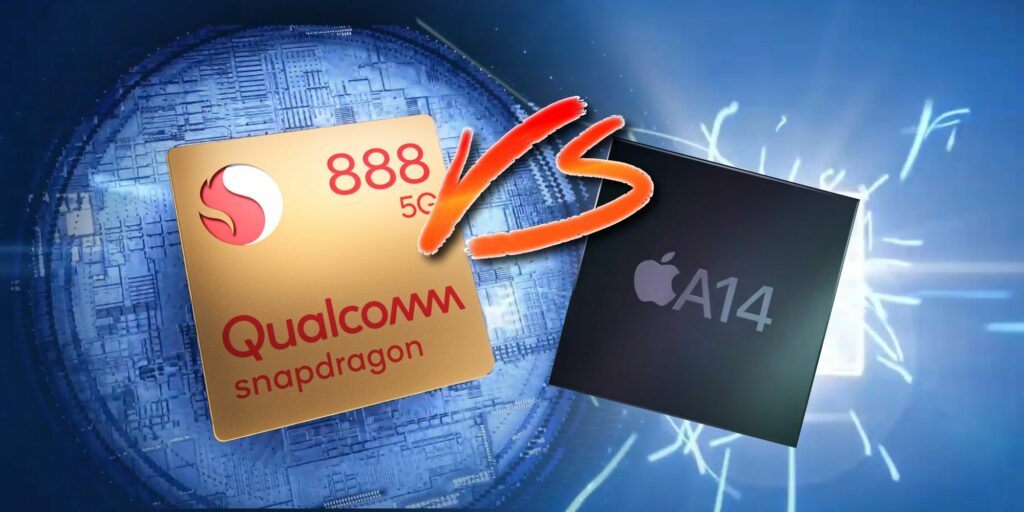

The Snapdragon 888 is clearly better than the previous Snapdragon 865 and 865+. However, the A14 maintained a thorough lead in Geekbench and GFXBench scores proving Apple’s reigning dominance for now. Therefore, A14 is currently the overall fastest mobile processor available at the moment. And, the question is, will any of this change when Snapdragon 888-powered phones actually arrive to market?
But, even if that’s the case, it shouldn’t matter too much for Android users. The improvement of the new chip would still be immense. And, by far, it’s one of the largest GPU performance leaps Qualcomm has been able to achieve.
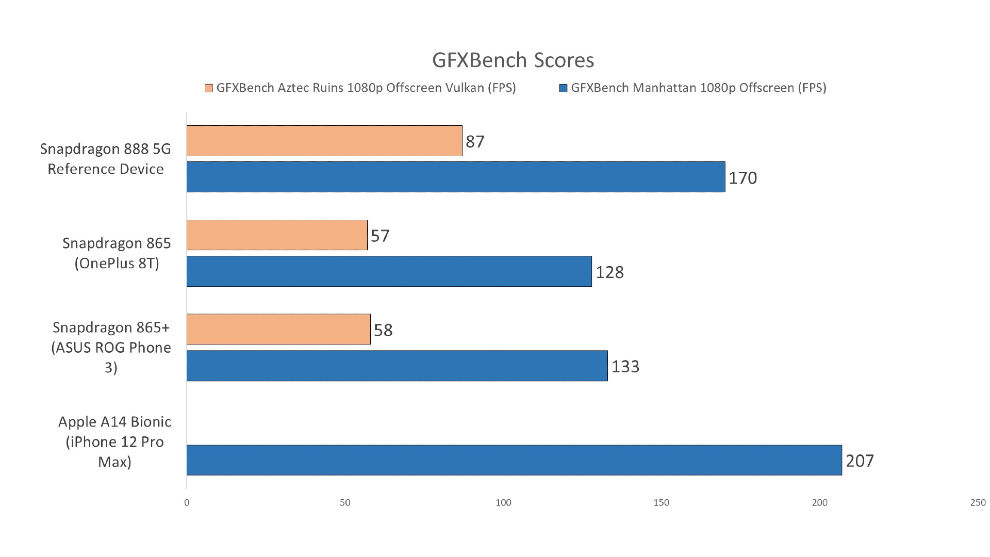
The Bottom Line
In the end, the Snapdragon 888 is truly a mighty fast chipset. It not only possesses incredible overall performance but also offers better efficiency for better battery life.
Besides the amazing improvements in CPU and GPU, the Snapdragon also offers better image and AI processing. Although these massive gains might go unnoticed by most users, the potentials of this chipset are exciting to ponder. We expect new features like Real-time AI video enhancements, multi-camera streams, and much more in the next year.
We will revisit these benchmarks once we have a high-end device with Samsung’s, Huawei’s, and MediaTek’s next-gen silicon. So, make sure to back in order to not miss any of the new Qualcomm Snapdragon 888 benchmarks tests.
Let us know what you think about the Qualcomm Snapdragon 888 benchmarks in the comments below!

